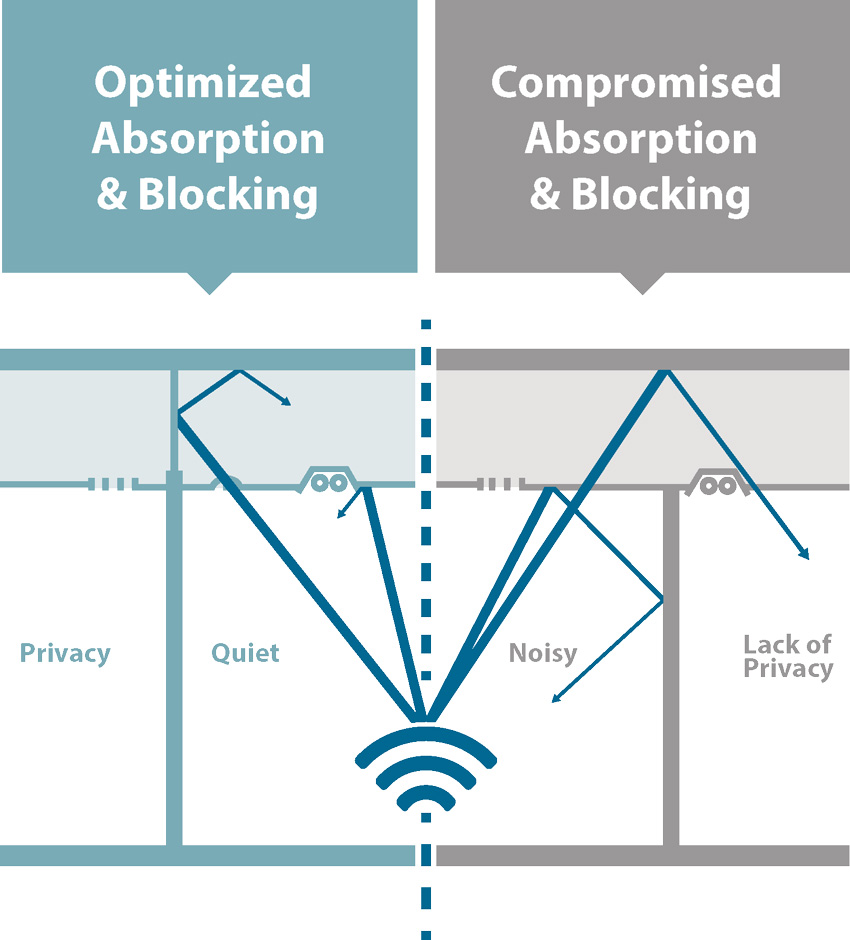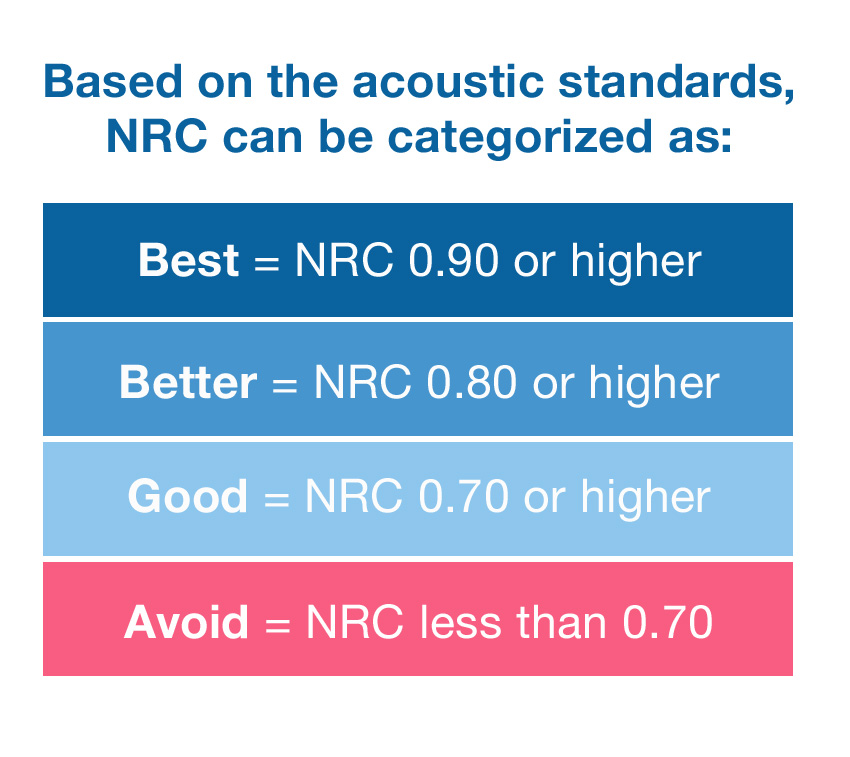Optimizing Acoustics for Effective Sound Design and Performance
The first step to fixing a problem is understanding it. Now that we understand the truths and have dispelled the myths, we need to ask, “Where do we go from here, and how can we make things better?” Let’s take a look at a new design approach: optimized acoustic design.
Optimized Acoustic Design
Optimized acoustic design can be described as an effective, no-compromise acoustic approach that results in compliance with the industry’s latest standards and achieves an optimal acoustic experience for people, all at a competitive price.
Mechanics
The old acoustic design approach, which was based on myths, unfortunately led us to a compromised result, as evidenced by those poor survey scores discussed earlier. For example, when the ceiling NRC was not high enough, NRC was sacrificed, resulting in more noise reflecting off the ceiling and traveling further, disturbing more people. In other words, a noisy environment. We’ve also seen what happens when people rely on ceilings alone to block noise between rooms. Since the ceiling system is full of penetrations and there’s a lack of privacy between rooms, you’re inevitably compromising both absorption and blocking.
Now, let’s compare that old model to an optimized acoustic design approach.

More stringent standards call for an optimized acoustic design approach, moving away from an old compromised approach.
First, you optimize the absorption of the ceiling to prevent noise from reflecting and traveling everywhere, thereby disturbing everyone. This is the main purpose of the ceiling and you take advantage of that strength.
Second, you decide if and where blocking is actually needed. If it is needed, there are multiple ways of providing it. For example, you could use a lightweight plenum barrier above the partition, but there are other methods as well.
Simply put, the old compromised method leads to noisy spaces and lack of privacy—exactly what we saw on the building occupant survey scores.
Enter the optimized acoustic design approach, which is based on good acoustic design and is consistent with the requirements in the standards, guidelines, and ratings systems.
Optimizing Absorption
Let’s focus first on optimizing absorption. To illustrate, look at the image below. Where is the sound absorption coming from in the building shown? Buildings like this are very common today—largely open, they have hard, sound-reflecting floors and glass in walls. In current architecture trends, the result is that most, if not all, of the absorption is provided by the ceiling. Optimal acoustic design must start with optimizing the sound absorption of the ceiling.

The need for high NRC-rated ceiling panels is increased as spaces become larger and walls and floors remain sound reflective.
When dealing with absorption you’ll either be talking about minimum NRC ratings or maximum RT60. We’ll cover both.
According to Gary Madaras, Ph.D., ASA, INCE, Associate AIA, acoustics specialist at the ROCKFON Group, “High--performing absorptive ceiling panels of NRC 0.90 can improve the acoustic experience in open--plan offices, classrooms, retail shops, health-care patient recovery areas, as well as in multifunctional rooms, corridors, meeting rooms, lobbies, and reception areas.” He adds, “NRC indicates the amount of noise absorbed by a ceiling material. Typically, the higher the NRC, the better. Ceilings lower than NRC 0.70 often require additional absorption on the walls. Look to your ceiling panels to meet the high absorption requirements you need and to your walls for blocking, when it’s needed.”
NRC is an average of the sound-absorption coefficients at four different octave bands: 250, 500, 1,000, and 2,000 Hertz. There is an ASTM standard for testing that (ASTM C 423), and the testing should come from an independent NVLAP-certified lab when reviewing these results. NRC values vary between 0.0 and 1.0 in 0.05 increments. Higher NRC ratings mean speech is more intelligible and noise is absorbed faster as it travels across an open space or down a corridor. To summarize:

You typically won’t want to specify a ceiling with NRC less than .70 as they are too reflective.
The second way standards may show absorption criteria is as reverberation time (RT60) instead of as NRC. It’s more common to see the criteria expressed as reverberation time so it’s good to know how to convert. The formula to convert reverberation time to NRC is:
NRC = (0.05 x Room Volume) / (RT60 x Area)
NRC: Noise reduction coefficient of the ceiling
Room Volume: Average length x average width x average height (all in feet)
Area: Area of the ceiling in length x width (both in feet)
0.05 is a constant when using feet as the units for volume and area
Note: The assumption is that there is no other significant absorption from other components in the room, such as wall panels or carpeting. If there are other factors, then this NRC value may be conservative.









